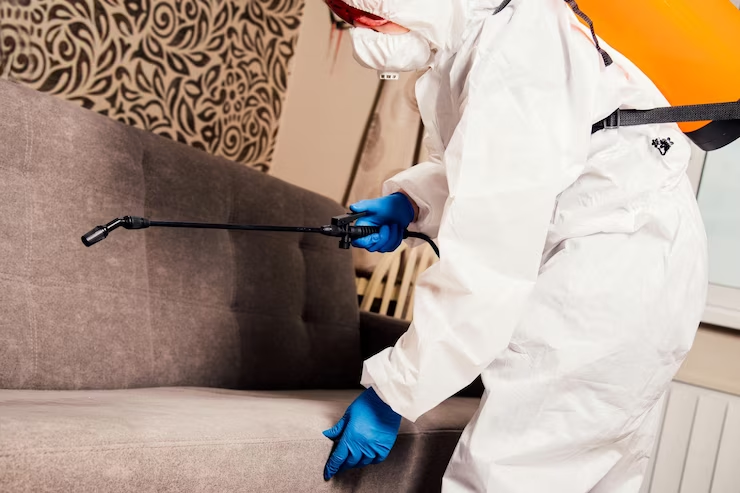A home’s roof is exposed to a variety of environmental factors that contribute to deterioration over time. Fortunately, homeowners can prevent roof damage by conducting regular inspections.
Signs of a damaged roof include missing shingles, water stains on the ceiling, and excessive moss or mold growth. Repairing these issues promptly will save money and prevent the need for more extensive repairs later on. Read on Roof Repair Near Me for more information.
As with any home component, shingles wear out over time. In general, shingle damage is an indicator of the need for a roof replacement or repair. When shingles are damaged, water may leak into your home, resulting in ceiling stains and other problems. If left unattended, this damage can cause costly structural issues, so it’s important to keep an eye out for shingle damage and take action as needed.
Shingles are most susceptible to damage from wind. Strong gusts can loosen or blow off a shingle, leaving the underlying material exposed to water. If you spot a shingle that is missing or torn, replace it right away. If the shingle is in a critical area of your roof, like a seam, you may want to consider filing an insurance claim.
Cracking is another common sign of shingle damage. This could be due to high winds, temperature changes, or aging.
To fix cracked shingles, apply roofing sealant to the affected area. Make sure to seal the edges as well, to prevent moisture from seeping through. Allow the shingle to dry for 24 hours before applying additional layers of sealant, as this ensures it adheres properly and securely.
The location and design of your roof also influence its vulnerability to shingle damage. Roofs with steep slopes, for example, are more resilient to shingle damage than flat roofs. Additionally, shingles that are placed in vulnerable areas of your roof, such as the ridges or hips, are more likely to experience shingle damage from wind pressure.
Sun bleaching can also cause shingles to become less durable. If you notice that a section of your roof’s shingles have become lighter in color, it’s likely due to sun bleaching and is an indication that you need to replace your roof.
A sagging roof can compromise the integrity of your home’s shingles, leading to leaks and other structural damage. The good news is that sagging roofs are relatively easy to repair, but it’s always best to have a professional examine the situation first.
Leaks
A leaky roof is a major problem that can cause extensive damage to the interior of your home. It can also cause mold growth, which requires professional cleaning and repair. It’s important to regularly inspect your roof for leaks and other signs of deterioration, such as water stains on ceilings or walls, musty smells, or unexplained puddles or dripping. Leaks can occur at many points, including the shingles themselves, the flashing or other covering materials, or the wood framing and insulation in your attic.
If you notice any of these problems, have your roof inspected by a professional as soon as possible to prevent further damage and expensive repairs. The most common leaks are caused by the deterioration of the flashing material around roof features such as chimneys, vents and skylights. The flashing is usually made of metal and is attached to the shingles with nails or adhesive, but it can corrode over time and allow water to seep into your home.
The most obvious sign of a leak is water stains on the ceiling or walls, but you should also look for discolored insulation or wood rot. If you can access your attic, trace the path of the water to find the source. Remember that water tends to drip at the lowest point, so it may not always be directly over the spot where you see the stain or puddle.
In many cases, a roof leak can be repaired with a simple patch job. For small holes and tears, a roofing professional can use a liquid rubber sealant to stop the flow of water. They can also re-seal or replace damaged flashing material to ensure that water cannot get into your home.
For severe leaks, a roof replacement may be necessary. Depending on the extent of the damage, this might involve replacing sections of your roof or installing a new layer of membrane and adhesive. In some cases, the professionals may also install additional drainage points or slightly modify the slope of your roof to help with water runoff and avoid ponding.
Damaged Flashing
A common source of roof leaks is damaged flashing. Located around roof protrusions like chimneys, vents, and skylights, flashing is the metal or rubber sleeve that creates a watertight seal. Like all roofing materials, flashing deteriorates over time from exposure to the elements and may require repair or replacement. Damaged flashing can lead to water infiltration and roof leaks that can damage shingles, insulation, and other roof components. Water stains on interior walls or ceilings can also indicate problems with the roof’s flashing.
If you notice signs of rust or corrosion, cracks in the flashing, or gaps or openings around these areas, it’s a good idea to call a professional for a repair as soon as possible. If left unattended, these issues can worsen and lead to expensive and extensive roof repairs.
Damaged flashing is caused by a number of factors, including weather conditions, poor installation, and age and wear. Heavy rains, snowstorms, high winds, and ice can all damage flashing or loosen the seal. Improper installation can be a problem, particularly when nails are not properly placed or caulking is not applied correctly.
While DIY repairs can be effective for some types of flashing damage, it is always best to call in a professional for a permanent solution. A skilled roofing contractor will remove the damaged flashing, clean the area, and apply a high-quality caulking or roofing cement to prevent leaks. In addition, the contractor will use a caulking gun or putty knife to fill in any cracks and ensure a secure and watertight seal.
Proper maintenance and timely repairs can help extend the lifespan of your roof, preventing expensive and inconvenient problems down the road. To protect your home, make it a priority to inspect the flashing at least once a year and take action immediately when you spot any signs of damage or deterioration. Inspecting the flashing regularly and having a professional conduct annual inspections can help you avoid costly and extensive roof repairs in the future. Schedule a roof inspection with Lyons Roofing today to catch any problems early and ensure the integrity of your roof’s flashing.
Sagging
Your roof protects your home from the elements, so it takes a beating over time. The stress of weathering causes your roof to age and wear down, which can cause sagging in the ridge line. While a small amount of sagging may not be a cause for concern, significant sagging or a bowed ridge line is an indicator of structural issues that need to be addressed. Left unchecked, a sagging roof can lead to water damage, mold growth, and other costly structural problems.
A sagging roof can be the result of a number of factors, but some common culprits include water damage, structural defects, and age. Water damage is often the most serious problem, as it can weaken wooden beams and deteriorate other materials over time. This can lead to sagging, especially in areas with heavy snowfall or high winds. Water damage can also cause leaks, which are a major contributor to sagging in older homes.
Sagging can be caused by overloading, which occurs when the weight of your roof exceeds what it is designed to support. This can be caused by debris buildup or the addition of extra insulation or roofing materials. Regular maintenance can help to prevent overloading, including clearing debris and ensuring that your roof is properly draining to avoid water accumulation.
Roof sagging can be fixed by a variety of methods, depending on the underlying cause. Some solutions include jacking up loose rafters or adding struts and supports to your roof. In some cases, a full replacement of the roof may be necessary.
While some homeowners may try to fix a sagging roof themselves, it is always recommended that you work with a professional. Working at heights and repairing unstable structures can be dangerous, so it is important to follow safety precautions like wearing a harness and using non-slip shoes. It is also a good idea to work with a partner and avoid working on your roof during inclement weather. A professional can ensure that your roof is safe and secure and will last for years to come.






